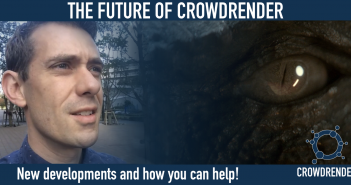About
Hello there.
My name is Eugene Demidov. I’m a freelancer from Riga, Latvia and a student at the Baltic International Academy.
My acquaintance with 3D graphics began in 2011, and the first tool I learned was 3ds Max, which I used for interior visualizations. In 2013 I finished my first project. It was a renovation of my room. I made it using Mental Ray while learning how to work with 3ds Max.
Soon after that, I got my first freelance offer.
In 2016 I discovered Blender. In the beginning, I used it just for fun and did not consider it to be the main tool for work. All I did was create scenes with MikuMikuDance models.
A few months later, having gained experience in Blender, I decided to try to use it in a freelance project, after which I completely switched to Blender.
Inspiration and Making the Scene
Every day I browse the internet in search of new ideas for interior scenes. For this scene I found inspiration on the Houzz web site.
The next step was searching for reference images to make props, like a coffee-mill, coffee pot, and metal containers. All the references were saved in PureRef. I decided to use a few old types of kitchen items. They remind me of my childhood, and a warm, homey atmosphere.
When I finished with references, I started making the scene. I made it similar to the main reference room and placed a plane with facade texture outside, to allow it to be seen through the window portal.
For the environment, I used a white color with Strength=10.
Next, I added furniture and, using the Boolean modifier, I cut holes for a sink and gas stove in the countertop.
I wasn’t satisfied with the color of the wall, so I changed it to a colder tone.
Then it was time to add some details and play with color correction.
A Few Words About Making Props
Most of the props are easy to recreate using reference photos. They have quite simple geometry.
Fusilli
- The fusilli were made in a few simple steps from a plane, the faces of which were duplicated and rotated to make a Y looking shape (1).
- Twisted using Proportion Editing (2).
- Next, I duplicated faces with little offset and used the Randomize command on the outer edges to make a little deformation (3).
- Added Solidify and Subdivision surface modifiers(4).
And voila! I have a simple fusilli pasta
After that, I made a simple material with translucency and color randomization.
To fill the jar, I used a simple physics simulation with ~650 copies of the object
Finalizing and Rendering
After a little research, I decided to change the camera position to focus on the kitchen workspace and give it a more artistic look, in my opinion.
Now I was ready to fill the scene with props. After all these manipulations I made a draft render to check everything.
After a little post-processing in Composer, I was ready to make the final render with two different views.
My System Setup
I use two machines for my scenes. A desktop PC, which I use when I’m working from home:
- Intel Core i7-3930K
- 32GB RAM
- Nvidia GeForce GTX 680
And a laptop, which I use while I’m out:
- Dell Inspiron G3 3579
- Intel Core i7-8750H
- 16GB RAM
- Nvidia GeForce GTX 1050 Ti
Thank you for your attention. I hope you enjoy this article a little.
About the Author
 Eugene Demidov, I hate Mondays.
Eugene Demidov, I hate Mondays.


























5 Comments
Very interesting that you start with the props 1st. Thank you for the break down
Very interesting that you start with the props 1st. Thank you for the breakdown,,, I don't get fully how u made the
Fusilli
Where do you find Glow and dispertion??? i cant find them in Compositor
Filter -> Glare. Select Fog Glow instead of Streaks.
Distort -> Lens Distortion and modify Dispersion value.
Very nice job! Thanks for the breakdown.